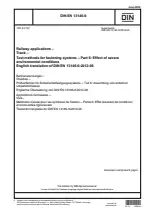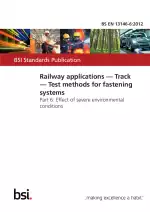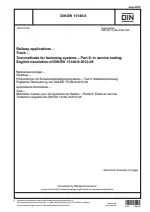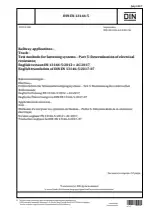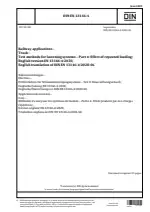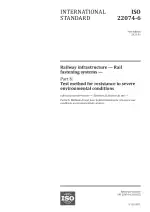DIN EN 13146-6 PDF Download
Standard EN EN DERailway Applications - Track - Test Methods for Fastening Systems - Part 6: Effect of Severe Environmental Conditions
Also Known As:
DIN EN 13146-6 is a standard that focuses on testing the effects of severe environmental conditions on fastening systems used in railway tracks. The standard provides a laboratory test procedure for evaluating the performance and durability of these fastening systems under harsh environmental conditions.
The test procedure outlined in DIN EN 13146-6 is specifically designed for a complete fastening assembly, excluding adhesive fastening systems for embedded rail. It aims to simulate severe environmental conditions, such as extreme temperatures, moisture, chemical exposure, and mechanical stress, to assess the reliability and effectiveness of the fastening system.
By subjecting the fastening assembly to these environmental conditions, the standard allows for the evaluation of its resistance to corrosion, degradation, and structural integrity. This testing process ensures that the fastening system can withstand the challenging conditions typically encountered in railway applications, enhancing the safety and longevity of the rail track infrastructure.
| Descriptors | Capacitive loads, Durability, Effect, Environmental conditions, Environmental effects, Environmental testing, Fasteners, Fixings, Laboratory testing, Permanent ways, Quality requirements, Rail fastening systems, Railway applications, Railway construction, Railway installations, Railways, Salt spray fog, Salt-spray tests, Sleepers, Testing, Tracks (materials handling equipment), Travel ways, Permanency, Pavements (roads), Ties, Sheets, Roadways, Superstructure |
| ICS Codes | 93.100 - Construction of railways |
| Language(s) | English |
| File Size | 614.4 KB |

